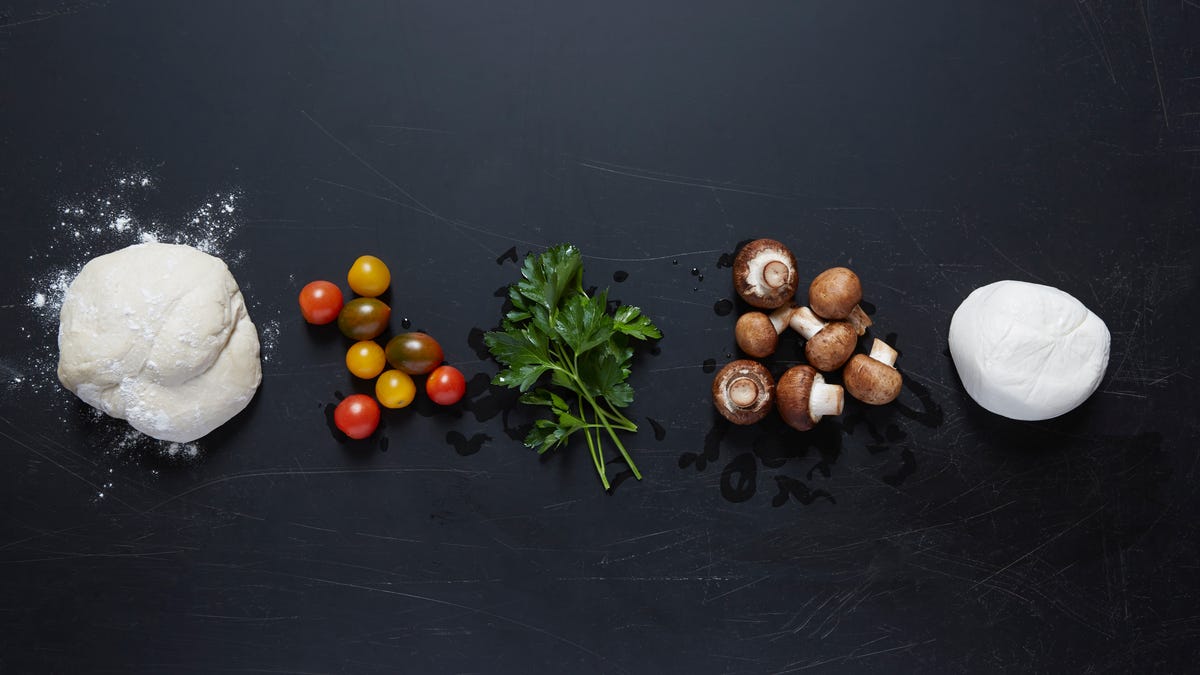Italian Chemists Bake Scientifically Perfect Pizza -- Without Yeast
Top-tier cheesy goodness could soon be available for anyone with a yeast allergy.

Scientists take a stab at pizza innovation.
Thousands of single-celled organisms gave their life for your last pizza. They died while helping its crust rise in the oven. You might know them as yeast.
When bakers craft dollops of pizza dough, they add sprinkles of yeast to the mix because these living, breathing fungi work hard to give the saucy treat its characteristic fluff. But even though most people don't have to think twice about consuming the organisms, a fraction of the population is intolerant of them. Eating normal pizza with the leavening agent puts people with yeast allergies at risk of developing stomach issues, rashes -- or worse, anaphylaxis.
That's why a crew of scientists from the University of Naples Federico II -- located in pizza's very own birthplace of Italy -- are designing yeast-free versions of the country's comfort food. In a paper published Tuesday in the journal Physics of Fluids, they outline a blueprint for how to make perfect pizza dough, minus the critters.
"This new technology can drive the development of new products, new dough formulations, and specific recipes for food intolerance, hopefully helping people enjoy healthy and tasty food," Ernestro Di Maio, a researcher at the Department of Chemical, Materials and Production Engineering at the University of Naples Federico II and an author of the study, said in a statement.
The technique is strikingly simple.
The researchers combined standard pizza dough ingredients -- water, flour and salt -- then placed the resulting glob in a hot autoclave. No yeast. This industrial device is designed to raise the temperature and pressure of whatever's inside.
Within this autoclave, the team says two things happen to mimic the job of yeast.
An applied high pressure makes gas dissolve into the dough, and as that pressure steadily releases during baking, bubbles form. Together, these actions make the dough rise like it would've with yeast. "The key to the process is to design the pressure release rate not to stress the dough, which likes to expand gently," Di Maio said.
Though the process is similar to how soda is carbonated, the study authors emphasize that it's much more delicate. Soda bubbles don't care much about pressure rates, but pizza dough likes to be tenderly, slowly and lovingly risen.
Due to this, the team suggests that anyone looking to use this procedure imparts the dough with mild pressure release rates, comparable to the levels found in at-home coffee makers.
The key to their conclusions was first studying how yeast-filled pizza dough behaves in a standard oven, then swapping it with a completely non-yeast counterpart. "This was fundamental to designing the pressure protocol for the dough without yeast," Rossana Pasquino, a researcher from the same department as Di Maio, said in a statement.
Though Pasquino and colleagues note they carried out many unofficial taste tests on their studied dough morsels, they're in the process of purchasing a larger autoclave that can make full-size pizzas for future experiments, as well as start transitioning their technology into pizza shops.
Reflecting on their journey toward non-living pizza dough as a whole, Pasquino says, "we had a lot of fun applying things we know well to delicious polymers, instead of our typical and sometimes boring, smelly plastics" and that "the idea of approaching food samples with the same technologies and knowledge used for thermoplastic polymers was surprisingly successful!"
Even further in the future, Di Maio, who has a yeast allergy himself, hopes the invention can help introduce other yeast-free snacks to the world, like cakes and bread.
In a sense, the end goal is to leave yeast -- yes, pun intended -- jobless.

